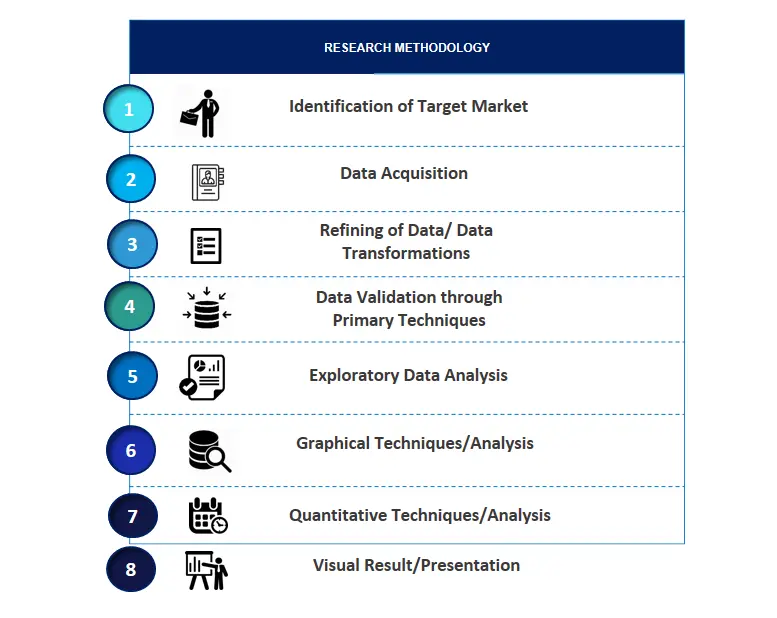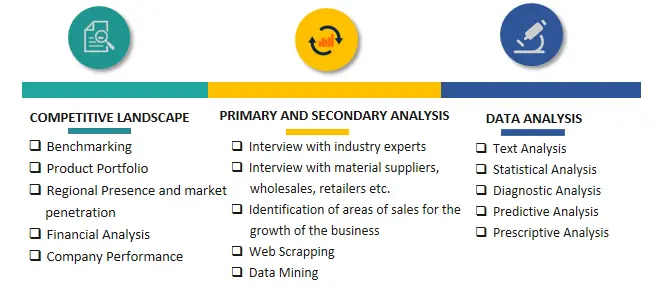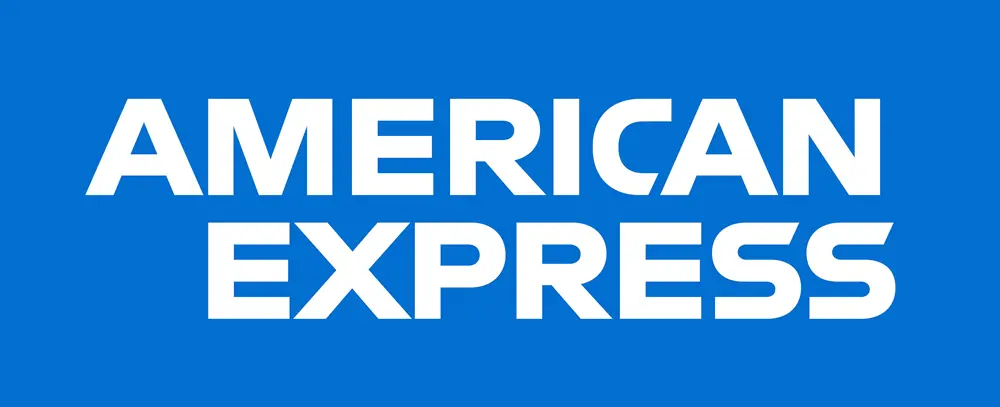
Cargo Handling Equipment Market Growth, Size, Trends, Share, Revenue and Future Outlook 2032
Cargo Handling Equipment Market Size- By Product, By Equipment Type, By Propulsion, Cargo Type, By Application, By End User- Regional Outlook, Competitive Strategies and Segment Forecast to 2032
| Published: Mar-2023 | Report ID: MACH2313 | Pages: 1 - 233 | Formats*: |
| Category : Equipment and Machinery | |||
-008500315032023.jpg)
-008501615032023.jpg)
| Report Metric | Details |
| Market size available for years | 2019-2032 |
| Base year considered | 2021 |
| Forecast period | 2022-2032 |
| Segments covered | By Product, By Equipment Type, By Propulsion, Cargo Type, By Application, By End User |
| Regions covered | Asia-Pacific, Europe, Middle East and Africa, North America, Latin America |
| Companies Covered | ABB (U.S.), Anhui Heli (China), CARGOTEC CORPORATION (Finland), Gantrex (Belgium), Hangcha Forklift (China), Hoist Material Handling, Inc. (U.S.), Hyster-Yale Group, Inc. (U.S.), KION GROUP AG (Germany), Konecranes (Finland), Liebherr-International Deutschland GmbH (Germany), Siemens Logistics GmbH (Germany), Terex Corporation. (U.S.), Textron Ground Support Equipment Inc. (U.S.), TLD (U.S.), TOYOTA INDUSTRIES CORPORATION (Japan), Wärtsilä (Finland) |
- Trucks
- Man Lifts
- Rail pushers
- Electric Pallet Jacks
- Excavators
- Tractors
- Bulldozers
- Side Picks
- Aviation Dollies
- Stacker
- Pallet jacks
- Loaders
- Conveyors System
- Automated Guided Vehicle
- Diesel
- Electric
- Others
- Container Cargo
- Dry Bulk Cargo
- Liquid Bulk Cargo
- Break Bulk Cargo
- Ro-Ro Cargo
- Air Cargo
- Marine Cargo
- Land Cargo
- Automotive
- Consumer & Retail
- Energy Resources
- Manufacturing
- Transportation
- Others
- Asia-Pacific
- Europe
- Middle East & Africa
- North America
- Latin America
- Global Cargo Handling Equipment Market Size (FY’2019-FY’2032)
- Overview of Global Cargo Handling Equipment Market
- Segmentation of Global Cargo Handling Equipment Market By Product (Trucks, Man Lifts, Rail Pushers, Electric Pallet Jacks, Excavators, Tractors, Bulldozers, Side Picks)
- Segmentation of Global Cargo Handling Equipment Market By Equipment Type (Aviation Dollies, Stacker, Pallet Jacks, Loader, Conveyors System, Automated Guided Vehicle, Forklift trucks, Cranes, Rubber Tired Gantry Cranes, Reach Stackers, Terminal Tractors)
- Segmentation of Global Cargo Handling Equipment Market By Cargo Type (Container Cargo, Dry Bulk Cargo, Liquid Bulk Cargo, Break Bulk Cargo, Ro-Ro Cargo)
- Segmentation of Global Cargo Handling Equipment Market By Application (Air Cargo, Marine Cargo, Land Cargo)
- Segmentation of Global Cargo Handling Equipment Market By End User (Automotive, Consumer & Retail, Energy Resources, Manufacturing, Transportation, Others)
- Growth Analysis of Global Cargo Handling Equipment Market
- Problems and Challenges in Global Cargo Handling Equipment Market
- Competitive Landscape in the Global Cargo Handling Equipment Market
- Details on Recent Investment in Global Cargo Handling Equipment Market
- Competitive Analysis of Global Cargo Handling Equipment Market
- Global Cargo Handling Equipment Market Key Players
- Global Cargo Handling Equipment Market Future Outlook and Projections (FY’2019-FY’2032)
- Recommendations from Analyst
1.1. Scope of the report1.2. Market segment analysis
2.1 Research data source
2.1.1 Secondary data2.1.2 Primary data2.1.3 SPER’s internal database2.1.4 Premium insight from KOL’s
2.2 Market size estimation
2.2.1 Top-down and Bottom-up approach
2.3 Data triangulation
4.1. Driver, Restraint, Opportunity and Challenges analysis
4.1.1 Drivers4.1.2 Restraints4.1.3 Opportunities4.1.4 Challenges
4.2. COVID-19 Impacts of the Global Cargo Handling Equipment Market
5.1. SWOT analysis
5.1.1 Strengths5.1.2 Weaknesses5.1.3 Opportunities5.1.4 Threats
5.2. PESTEL analysis
5.2.1 Political landscape5.2.2 Economic landscape5.2.3 Social landscape5.2.4 Technological landscape5.2.5 Environmental landscape
5.2.6 Legal landscape
5.3. PORTER’S five forces analysis
5.3.1 Bargaining power of suppliers5.3.2 Bargaining power of Buyers5.3.3 Threat of Substitute5.3.4 Threat of new entrant5.3.5 Competitive rivalry
5.4. Heat map analysis
6.1 Global Cargo Handling Equipment Manufacturing Base Distribution, Sales Area, Product Type6.2 Mergers & Acquisitions, Partnerships, Product Launch, and Collaboration in Global Cargo Handling Equipment Market
7.1 Trucks7.2 Man Lifts7.3 Rail pushers7.4 Electric Pallet Jacks7.5 Excavators7.6 Tractors7.7 Bulldozers7.8 Side Picks
8.1 Aviation Dollies8.2 Stacker8.3 Pallet jacks8.4 Loaders8.5 Conveyors System8.6 Automated Guided Vehicle8.7 Forklift trucks8.8 Cranes8.9 Rubber Tired Gantry Cranes8.10 Reach Stackers8.11 Terminal Tractors
9.1 Diesel9.2 Electric9.3 Others
10.1 Container Cargo10.2 Dry Bulk Cargo10.3 Liquid Bulk Cargo10.4 Break Bulk Cargo10.5 Ro-Ro Cargo
11.1 Air Cargo11.2 Marine Cargo11.3 Land Cargo
12.1 Automotive12.2 Consumer & Retail12.3 Energy Resources12.4 Manufacturing12.5 Transportation12.6 Others
13.1 Global Cargo Handling Equipment Market and Market Share by Region (2019-2025)13.2 Global Cargo Handling Equipment Market and Market Share by Region (2026-2032)13.3 Asia-Pacific
13.3.1 Australia13.3.2 China13.3.3 India13.3.4 Japan13.3.5 South Korea13.3.6 Rest of Asia-Pacific
13.4 Europe
13.4.1 France13.4.2 Germany13.4.3 Italy13.4.4 Spain13.4.5 United Kingdom13.4.6 Rest of Europe
13.5 Middle East and Africa
13.5.1 Kingdom of Saudi Arabia13.5.2 United Arab Emirates13.5.3 Rest of Middle East & Africa
13.6 North America
13.6.1 Canada13.6.2 Mexico13.6.3 United States
13.7 Latin America
13.7.1 Argentina13.7.2 Brazil13.7.3 Rest of Latin America
14.1 ABB
14.1.1 Company details14.1.2 Financial outlook14.1.3 Product summary14.1.4 Recent developments
14.2 Anhui Heli
14.2.1 Company details14.2.2 Financial outlook14.2.3 Product summary14.2.4 Recent developments
14.3 Cargotec Corporation
14.3.1 Company details14.3.2 Financial outlook14.3.3 Product summary14.3.4 Recent developments
14.4 Gantrex
14.4.1 Company details14.4.2 Financial outlook14.4.3 Product summary14.4.4 Recent developments
14.5 Hangcha Forklift
14.5.1 Company details14.5.2 Financial outlook14.5.3 Product summary14.5.4 Recent developments
14.6 Hoist Material Handling Inc
14.6.1 Company details14.6.2 Financial outlook14.6.3 Product summary14.6.4 Recent developments
14.7 Hyster Yale Group Inc
14.7.1 Company details14.7.2 Financial outlook14.7.3 Product summary14.7.4 Recent developments
14.8 KION Group AG
14.8.1 Company details14.8.2 Financial outlook14.8.3 Product summary14.8.4 Recent developments
14.9 Konecranes
14.9.1 Company details14.9.2 Financial outlook14.9.3 Product summary14.9.4 Recent developments
14.10 Libherr-International Deytschland GmbH
14.10.1 Company details14.10.2 Financial outlook14.10.3 Product summary14.10.4 Recent development
14.11 Siemens Logistics GmbH
14.11.1 Company details14.11.2 Financial outlook14.11.3 Product summary
14.11.4 Recent developments
14.12 Terex Corporation
14.12.1 Company details14.12.2 Financial outlook14.12.3 Product summary14.12.4 Recent developments
14.13 Textron Ground Support Equipment Inc
14.13.1 Company details14.13.2 Financial outlook14.13.3 Product summary14.13.4 Recent developments
14.14 TLD
14.14.1 Company details14.14.2 Financial outlook14.14.3 Product summary14.14.4 Recent developments
14.15 Toyota Indusries Corporation
14.15.1 Company details14.15.2 Financial outlook14.15.3 Product summary14.15.4 Recent developments
14.16 Wartsila
14.16.1 Company details14.16.2 Financial outlook14.16.3 Product summary14.16.4 Recent developments
SPER Market Research’s methodology uses great emphasis on primary research to ensure that the market intelligence insights are up to date, reliable and accurate. Primary interviews are done with players involved in each phase of a supply chain to analyze the market forecasting. The secondary research method is used to help you fully understand how the future markets and the spending patterns look likes.
The report is based on in-depth qualitative and quantitative analysis of the Product Market. The quantitative analysis involves the application of various projection and sampling techniques. The qualitative analysis involves primary interviews, surveys, and vendor briefings. The data gathered as a result of these processes are validated through experts opinion. Our research methodology entails an ideal mixture of primary and secondary initiatives.



Frequently Asked Questions About This Report
PLACE AN ORDER
Year End Discount
Sample Report
Pre-Purchase Inquiry
NEED CUSTOMIZATION?
Request CustomizationCALL OR EMAIL US
100% Secure Payment






Related Reports
Our Global Clients
Our data-driven insights have influenced the strategy of 200+ reputed companies across the globe.




















